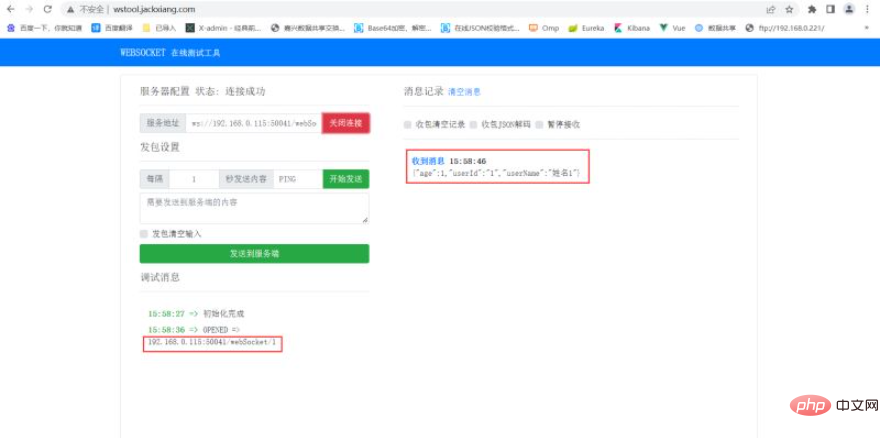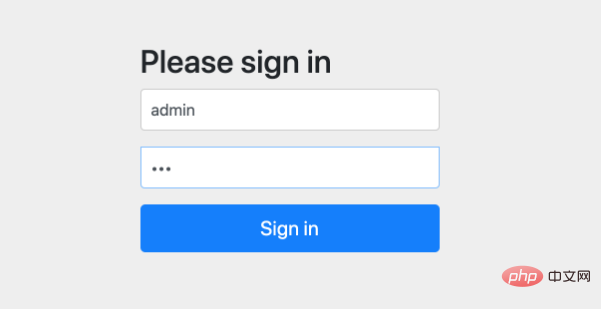
Golang WebSocket Security Guide: Protect your application from attacks
Introduction:
WebSocket is a two-way communication protocol based on the HTTP protocol, which enables Persistent two-way communication is possible between the browser and the server. However, precisely because of this two-way communication feature, WebSocket has also become a potential target for attackers to conduct malicious attacks. When using Golang to develop WebSocket applications, we need to take a series of security measures to protect the application from attacks. This article will introduce some common WebSocket attack types and provide corresponding Golang code examples to defend against these attacks.
1. Cross-site scripting attack (XSS)
Cross-site scripting attack is a common web security vulnerability. The attacker injects malicious scripts into the page to obtain the user's sensitive information or hijack the user's password. session. In WebSocket applications, XSS attacks are also risky. In order to prevent XSS attacks, we can adopt the following measures:
- Input verification and filtering: When receiving data from the client, strictly verify and filter the input. Use the validation functions and regular expressions provided in Golang to check the validity of the data.
Code sample:
import "net/url"
func validateInput(input string) bool {
_, err := url.ParseRequestURI(input)
if err != nil {
return false
}
return true
}- Output encoding: When sending data to the client, encode the output appropriately to ensure that malicious scripts injected with attacks cannot be executed.
Code example:
import "html"
func sendMessage(client *websocket.Conn, message string) {
encodedMessage := html.EscapeString(message)
client.WriteMessage(websocket.TextMessage, []byte(encodedMessage))
} 2. Cross-site request forgery (CSRF)
Cross-site request forgery is a method that uses users to perform unexpected actions while logged in. The attack method of operation. Attackers perform unauthorized operations by forging user identity information and sending malicious requests. For WebSocket applications, we can take the following measures to prevent CSRF attacks:
- Add CSRF token: Generate a random CSRF token for each user and store it in the session. This token is sent every time a WebSocket request is initiated, and the validity of the token is verified on the server side.
Code example:
import "crypto/rand"
import "encoding/base64"
func generateCsrfToken() string {
token := make([]byte, 32)
_, err := rand.Read(token)
if err != nil {
// 处理错误
}
return base64.StdEncoding.EncodeToString(token)
}- SameSite Cookie attribute: Set the cookie's SameSite attribute to Strict or Lax to prevent cross-site request forgery.
Code example:
http.SetCookie(w, &http.Cookie{
Name: "session",
Value: sessionID,
SameSite: http.SameSiteStrictMode,
}) 3. Denial of Service Attack (DoS)
Denial of Service attack aims to make normal users unable to access or use services by consuming server resources. To protect WebSocket applications from DoS attacks, we can take the following measures:
- Limit the number of connections: Limit the number of concurrent connections per IP address or user to prevent a single user from taking up too many resources.
Code example:
import "sync/atomic"
type ConnectionLimiter struct {
MaxConnections int32
CurrentCount int32
}
func (l *ConnectionLimiter) Increase() bool {
count := atomic.AddInt32(&l.CurrentCount, 1)
if count > l.MaxConnections {
atomic.AddInt32(&l.CurrentCount, -1)
return false
}
return true
}
func (l *ConnectionLimiter) Decrease() {
atomic.AddInt32(&l.CurrentCount, -1)
}- Verify when establishing a connection: When establishing a WebSocket connection, verify the client to ensure that it is a legitimate user.
Code example:
func authenticate(client *websocket.Conn) bool {
// 进行身份验证的逻辑
}Conclusion:
By taking appropriate security measures, we can effectively protect Golang WebSocket applications from attacks. When developing WebSocket applications, it is important to consider these security issues and implement corresponding defense mechanisms to ensure the security and reliability of the application.
The above is the detailed content of Golang WebSocket Security Guide: Protect your application from attacks. For more information, please follow other related articles on the PHP Chinese website!
 Vue开发注意事项:避免常见的安全漏洞和攻击Nov 22, 2023 am 09:44 AM
Vue开发注意事项:避免常见的安全漏洞和攻击Nov 22, 2023 am 09:44 AMVue是一种流行的JavaScript框架,广泛应用于Web开发中。随着Vue的使用不断增加,开发人员需要重视安全问题,以避免常见的安全漏洞和攻击。本文将讨论Vue开发中需要注意的安全事项,以帮助开发人员更好地保护他们的应用程序不受攻击。验证用户输入在Vue开发中,验证用户输入是至关重要的。用户输入是最常见的安全漏洞来源之一。在处理用户输入时,开发人员应该始
 SpringBoot怎么整合WebSocket实现后端向前端发送消息May 11, 2023 pm 02:07 PM
SpringBoot怎么整合WebSocket实现后端向前端发送消息May 11, 2023 pm 02:07 PM一、什么是websocket接口使用websocket建立长连接,服务端和客户端可以互相通信,服务端只要有数据更新,就可以主动推给客户端。WebSocket使得客户端和服务器之间的数据交换变得更加简单,允许服务端主动向客户端推送数据。在WebSocketAPI中,浏览器和服务器只需要完成一次握手,两者之间就直接可以创建持久性的连接,并进行双向数据传输。在WebSocketAPI中,浏览器和服务器只需要做一个握手的动作,然后,浏览器和服务器之间就形成了一条快速通道。两者之间就直接可以数据互相传送。
 SpringBoot怎么实现WebSocket即时通讯May 12, 2023 am 09:13 AM
SpringBoot怎么实现WebSocket即时通讯May 12, 2023 am 09:13 AM1、引入依赖org.springframework.bootspring-boot-starter-websocketorg.projectlomboklombokcom.alibabafastjson1.2.32、WebSocketConfig开启WebSocketpackagecom.shucha.deveiface.web.config;/***@authortqf*@Description*@Version1.0*@since2022-04-1215:35*/importorg.spri
 浏览器支持WebTransport?它能替代WebSockets?Feb 23, 2023 pm 03:36 PM
浏览器支持WebTransport?它能替代WebSockets?Feb 23, 2023 pm 03:36 PM许多应用程序,如游戏和直播等场景,需要一种机制来尽可能快地发送消息,同时可以接受无序、不可靠的数据传输方式。本机应用程序虽然可以使用原始 UDP 套接字,但这些在 Web 上不可用,因为它们缺乏加密、拥塞控制、同意发送机制(以防止 DDoS 攻击)。
 PHP+Socket系列之实现websocket聊天室Feb 02, 2023 pm 04:39 PM
PHP+Socket系列之实现websocket聊天室Feb 02, 2023 pm 04:39 PM本篇文章给大家带来了关于php+socket的相关知识,其中主要介绍了怎么使用php原生socket实现一个简易的web聊天室?感兴趣的朋友下面一起来看一下,希望对大家有帮助。
 SpringBoot中怎么使用WebSocket实现点对点消息May 16, 2023 pm 12:58 PM
SpringBoot中怎么使用WebSocket实现点对点消息May 16, 2023 pm 12:58 PM一、添加依赖,配置使用SpringSecurity里的用户。org.springframework.bootspring-boot-starter-security我们现在需要配置用户信息和权限配置。@ConfigurationpublicclassWebSecurityConfigextendsWebSecurityConfigurerAdapter{//指定密码的加密方式@SuppressWarnings("deprecation")@BeanPasswordEncode
 PHP API开发中的如何处理Long Polling和WebSocketJun 17, 2023 am 08:52 AM
PHP API开发中的如何处理Long Polling和WebSocketJun 17, 2023 am 08:52 AM随着互联网和移动互联网的发展,越来越多的应用程序需要实现实时通信功能。在Web开发中,LongPolling和WebSocket是两个常用的协议,可以实现实时通信的功能。在PHPAPI开发中,如何处理LongPolling和WebSocket是一个需要考虑的问题。一、LongPollingLongPolling(长轮询)是一
 如何在PHP中使用WebSocketJun 11, 2023 pm 06:09 PM
如何在PHP中使用WebSocketJun 11, 2023 pm 06:09 PM随着网络技术的发展,WebSocket(即Web套接字)已经成为了一种流行的协议,它可以在浏览器和服务器之间建立一个保持连接的实时通信通道。这种协议在实现Web应用程序中的实时通信功能方面发挥了巨大的作用。在PHP开发领域中,WebSocket的应用越来越广泛。在本文中,我们将介绍如何在PHP中使用WebSocket。安装WebSocket库首先,我们需


Hot AI Tools

Undresser.AI Undress
AI-powered app for creating realistic nude photos

AI Clothes Remover
Online AI tool for removing clothes from photos.

Undress AI Tool
Undress images for free

Clothoff.io
AI clothes remover

AI Hentai Generator
Generate AI Hentai for free.

Hot Article

Hot Tools

Dreamweaver Mac version
Visual web development tools

VSCode Windows 64-bit Download
A free and powerful IDE editor launched by Microsoft

MinGW - Minimalist GNU for Windows
This project is in the process of being migrated to osdn.net/projects/mingw, you can continue to follow us there. MinGW: A native Windows port of the GNU Compiler Collection (GCC), freely distributable import libraries and header files for building native Windows applications; includes extensions to the MSVC runtime to support C99 functionality. All MinGW software can run on 64-bit Windows platforms.

PhpStorm Mac version
The latest (2018.2.1) professional PHP integrated development tool

SAP NetWeaver Server Adapter for Eclipse
Integrate Eclipse with SAP NetWeaver application server.






